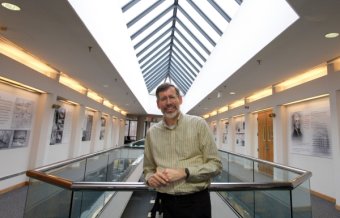An Old Dominion University research team at the Thomas Jefferson National Accelerator Facility (Jefferson Lab) is part of an international collaboration that has taken a major step toward answering a question that has vexed physicists for decades.
The ODU team is led by Lawrence Weinstein, professor and Eminent Scholar of physics at ODU. He wrote an article for the current edition of the scientific journal Nature about the research, which goes a long way toward explaining why the distribution of quarks in the nucleus of an atom differs from that in protons and neutrons. This is known as the European Muon Collaboration (EMC) Effect, named after the group that discovered it.
"That's been an outstanding mystery since '83," he said. "There've been over 1,000 papers written on this."




